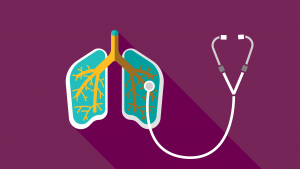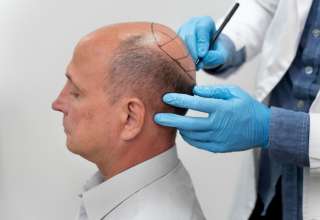If you’ve just been diagnosed with chronic obstructive pulmonary disease, it’s natural that you’ll have a lot of questions about the illness, its symptoms, and how it may affect your day-to-day life. Knowing what to expect with COPD will help you to manage your symptoms in the long-term.
One common symptom of COPD is shortness of breath. The two main forms of COPD, chronic bronchitis and emphysema, can both cause damage to the lungs that make it hard to breathe. Because it’s more difficult for air to pass through airways and into the lungs, you might experience the following sensations:
- More effort required to breathe
- Dull, heavy pressure in your chest
- Desperation for air
Breathlessness is far from a pleasant symptom to experience, and it may make you feel anxious or concerned. It’s important to stay as calm as possible during a situation of breathlessness and keep in mind that the moment will pass. Use this COPD guide to learn more about the symptoms of COPD.
Shortness of Breath with Emphysema
Emphysema is most commonly associated with shortness of breath. This form of COPD damages the air sacs in the lungs. This damage is usually caused by breathing in irritants like cigarette smoke or harsh chemicals.
In emphysema, the air sacs in the lungs aren’t as stretchy as they are in a healthy person’s lungs. This means that a person will feel they need to increase their effort to breathe in and out, which can quickly lead to shortness of breath.
Shortness of Breath with Chronic Bronchitis
Chronic bronchitis is largely characterized by irritation, which leads to swelling of the airways, and excess mucus in the lungs. The swelling makes it more difficult for air to pass through the airways and means that less air makes it into the lungs in every breath. The mucus can cause the airways to become even narrower, increasing breathing difficulty and causing shortness of breath.
COPD Flare-Ups
For the majority of people with COPD, one of the most common signs of a COPD flare-up is increased shortness of breath. You may also feel increased fatigue, fever, a scratchy throat, swollen ankles, and confusion. Usually, a COPD flare-up can be managed with inhaler use, or the use of an oxygen tank to get more oxygen into the lungs.
When to Seek Outside Help
COPD is currently incurable, but treatment should help you to manage your shortness of breath and maintain a good quality of life. If you think your symptoms are worsening even with treatment, it’s worth visiting a doctor and asking about additional treatment options. You should especially seek medical attention if you’re experiencing any of the following symptoms:
- Fast or irregular heartbeat
- Chest pain
- Consistently rapid breathing
- Difficulty completing a sentence in a conversation
Keep in mind that breathlessness is a normal symptom of COPD, unpleasant as it may be. If a COPD flare-up persists, visit your emergency doctor for support.











